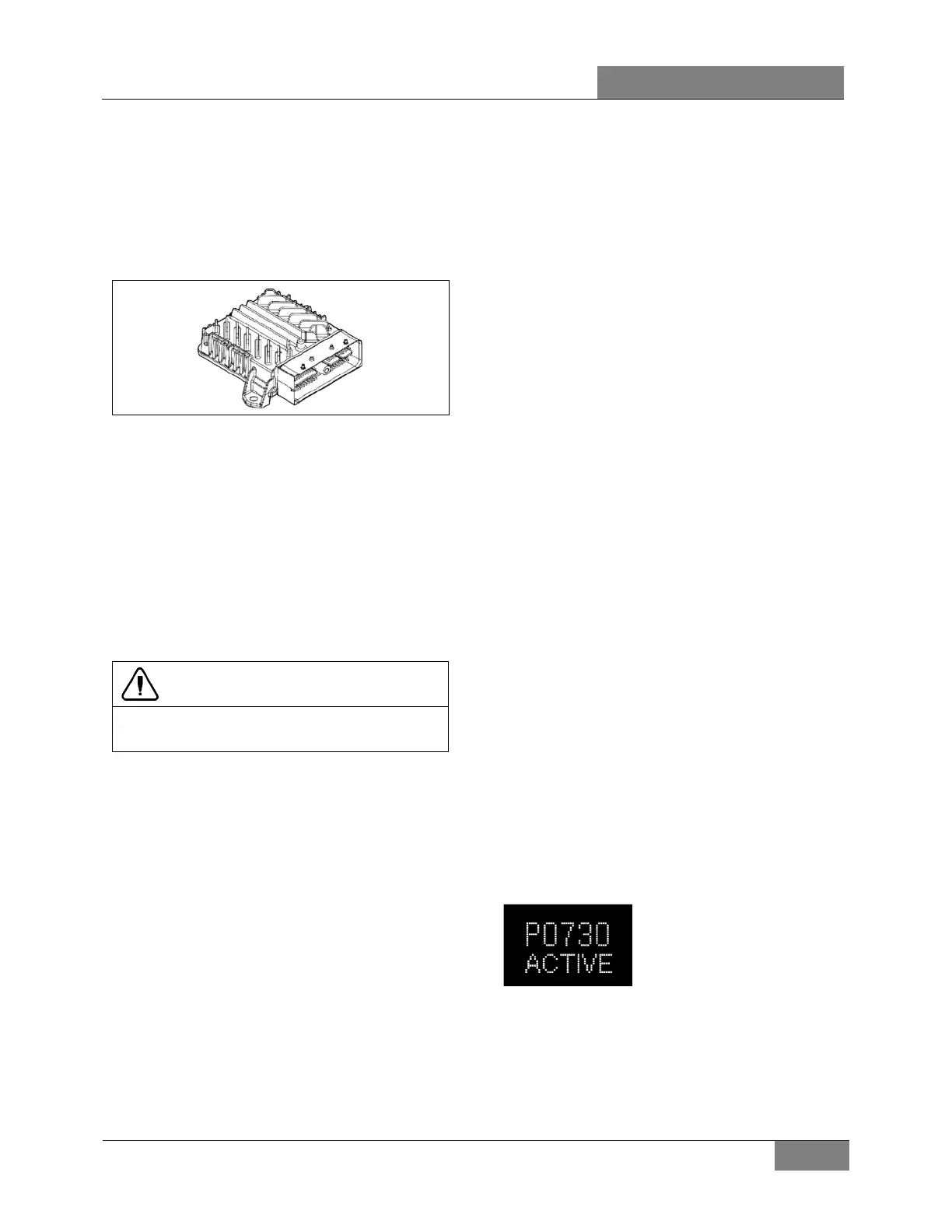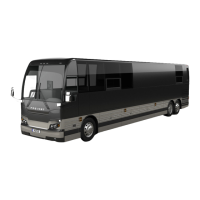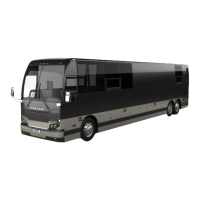DOB 1300-1556 | X3-45 Commuter PA-1648 Maintenance Manual First release Oct 2020
7. ALLISON TRANSMISSION
TROUBLESHOOTING
The Allison transmission is equipped with a
Transmission Control Module (TCM) which
involves specific diagnostic incident codes. The
TCM unit is located in the coach main power
compartment.
FIGURE 15: TRANSMISSION CONTROL MODULE (07140)
TCM Replacement
The TCM is a non-serviceable electronic device.
When it fails, it must be replaced using the
following procedure:
• Open the coach main power compartment in
order to get access to the TCM;
• Remove the electrical cable connectors;
• Unscrew the TCM unit;
• Replace by reversing the procedure.
CAUTION
Place the battery master switch to the ‘’OFF’’
position.
7.1 DIAGNOSTIC TROUBLESHOOTING
CODES (DTC) — ALLISON 5TH
GENERATION CONTROLS
Diagnostic features are provided with the
transmission control system to assist in
troubleshooting of malfunctions and/or the
monitoring of specific operating parameters.
When a control system malfunction is detected,
a series of Diagnostic Trouble Codes (DTCs) are
used to identify and clarify the nature of the
malfunction. These DTCs are each named by a
5 character alphanumeric string that refers to a
diagnostic algorithm running pass/fail tests to
help identify a malfunction in the transmission or
vehicle operation. Most DTCs have some kind of
diagnostic response that the operator notices,
such as an illuminated CHECK light, selector
display change, lock in range, or inhibit shifts
condition.
DTCs are logged in the Transmission Control
Module (TCM) memory by severity and by their
active/inactive status with the most severe and
active codes listed first. A maximum of five
DTCs (numbered d1- d5) from most recent to
oldest may be read from the shift selector. As
DTCs are added, the oldest inactive DTC
(historic) is dropped from the list. If all DTCs are
active, the DTC with the lowest priority is
dropped from the list.
An active code is any code that is current in the
TCM decision-making process and has failed the
DTC test(s) associated with that specific
diagnostic algorithm. Historical codes, which are
by definition inactive, are codes that are no
longer failing their algorithm but are retained in
the TCM in order to help the technician analyze
possible causes and provide them direction if the
vehicle is brought in before they are cleared from
the queue.
DTCs can be cleared manually by the operator
or they clear automatically from last (d5) to first
(d1) in the queue after a number of engine
starts, without becoming active again.
7.1.1 Using Shift Selector for Accessing
Diagnostics Information
DTCs can be displayed on the display portion of
the shift selector. A DTC is either active or
historic. An active DTC is a DTC that is current
in the TCM decision-making process. Historic
DTCs are retained in the TCM memory and do
not necessarily affect the TCM decision-making
process.
7.1.2 Display Sequence
Up to five DTCs may be displayed one at a time
from the selector once the diagnostic display
mode has been initiated by the operator. Each
DTC is 5 characters in length. The DTC status
active or inactive is shown below the DTC.
Shows active DTC P0730
The operator presses the MODE button to read
the next DTC in the queue (if any) or requests to
exit diagnostics mode. The diagnostics mode
times out and returns the selector to normal
operating mode after approximately 10 minutes
of operator inactivity.

